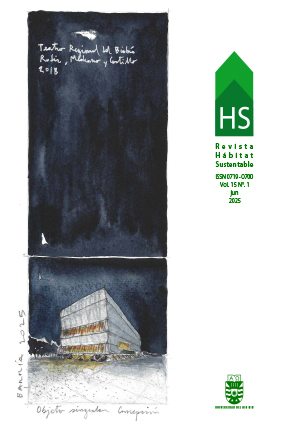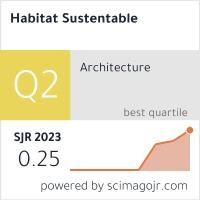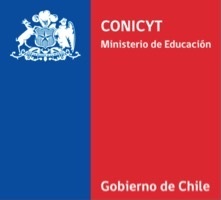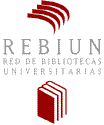Evaluación del confort térmico exterior en Kampungs urbanos de alta densidad en Tamansari, Bandung: un estudio de simulación del microclima
DOI:
https://doi.org/10.22320/07190700.2025.15.01.03Palabras clave:
asentamiento urbano, confort térmico al aire libre, simulación de rendimiento, ENVI-met, asentamiento de alta densidadResumen
Los asentamientos urbanos, caracterizados por asentamientos densos y desarrollados orgánicamente, presentan desafíos únicos para lograr el confort térmico al aire libre. Este estudio investiga cómo las variables físicas clave (disposición de los edificios, materiales de la superficie y vegetación) afectan el microclima de los espacios al aire libre en Tamansari, Bandung, utilizando simulaciones ENVI-met 4. Los hallazgos revelan que la reflectividad del material influye significativamente en la temperatura del aire, y que los pavimentos con un albedo más bajo resultan más efectivos para reducir la acumulación de calor. Las disposiciones de edificios compactos con una alta relación altura-ancho brindan un sombreado esencial, mitigando el estrés térmico, mientras que la vegetación ubicada estratégicamente mejora tanto el sombreado como el flujo del viento, lo que contribuye a mejorar el confort térmico. Estos conocimientos ofrecen pautas valiosas para los arquitectos y planificadores urbanos que buscan diseñar entornos urbanos de alta densidad que respondan al clima. El estudio resalta la importancia de integrar estrategias de refrigeración pasiva para mejorar la habitabilidad al aire libre en los kampungs urbanos, particularmente en climas tropicales.
Descargas
Citas
ABAAS, Z. R. (2020). Impact of development on Baghdad’s urban microclimate and human thermal comfort. Alexandria Engineering Journal, 59(1), 275–290. https://doi.org/10.1016/j.aej.2019.12.040 DOI: https://doi.org/10.1016/j.aej.2019.12.040
AKBARI, H., DAVIS, S., DORSANO, S., HUANG, J., & WINERT, S. (1992). Cooling our communities: A guidebook on tree planting and light-colored surfacing. United States Environmental Protection Agency. https://doi.org/10.2172/10155334 DOI: https://doi.org/10.2172/10155334
AKBARI, H., POMERANTZ, M., & TAHA, H. (2001). Cool surfaces and shade trees to reduce energy use and improve air quality in urban areas. Solar Energy, 70(3), 295–310. https://doi.org/10.1016/S0038-092X(00)00089-X DOI: https://doi.org/10.1016/S0038-092X(00)00089-X
ALEKSANDROWICZ, O., & PEARLMUTTER, D. (2023). The significance of shade provision in reducing street-level summer heat stress in a hot Mediterranean climate. Landscape and Urban Planning, 229, 104588. https://doi.org/10.1016/j.landurbplan.2022.104588 DOI: https://doi.org/10.1016/j.landurbplan.2022.104588
ALI-TOUDERT, F., & MAYER, H. (2006). Numerical study on the effects of aspect ratio and orientation of an urban street canyon on outdoor thermal comfort in hot and dry climate. Building and Environment, 41(2), 94–108. https://doi.org/10.1016/j.buildenv.2005.01.013 DOI: https://doi.org/10.1016/j.buildenv.2005.01.013
ARNFIELD, A. J. (1990). Street design and urban canyon solar access. Energy and Buildings, 14(2), 117–131. https://doi.org/10.1016/0378-7788(90)90031-D DOI: https://doi.org/10.1016/0378-7788(90)90031-D
ASRIANA, N., RAHMAH, F. F., & MEZZALUNA, N. A. (2024). Characteristics of Public Open Space Area in the Kampung Settlement (Case Study: Kampung Cungkeng). Journal of Architectural Design and Urbanism, 6(2), 63–73. https://doi.org/10.14710/jadu.v6i2.21705 DOI: https://doi.org/10.14710/jadu.v6i2.21705
BANIASSADI, A., HEUSINGER, J., & SAILOR, D. J. (2018). Building energy savings potential of a hybrid roofing system involving high albedo, moisture-retaining foam materials. Energy and Buildings, 169, 283–294. https://doi.org/10.1016/j.enbuild.2018.04.004 DOI: https://doi.org/10.1016/j.enbuild.2018.04.004
BENRAZAVI, N., BENRAZAVI, R., DOLA, K., UJANG, N., & BENRAZAVI, N. (2016). Effect of pavement materials on surface temperatures in tropical environment. Sustainable Cities and Society, 22, 94–103. https://doi.org/10.1016/j.scs.2016.01.011 DOI: https://doi.org/10.1016/j.scs.2016.01.011
BOWLER, D. E., BUYUNG-ALI, L., KNIGHT, T. M., & PULLIN, A. S. (2010). Urban greening to cool towns and cities: A systematic review of the empirical evidence. Landscape and Urban Planning, 97(3), 147–155. https://doi.org/10.1016/j.landurbplan.2010.05.006 DOI: https://doi.org/10.1016/j.landurbplan.2010.05.006
BRUSE, M., & FLEER, H. (1998). Simulating surface–plant–air interactions inside urban environments with a three-dimensional numerical model. Environmental Modelling & Software, 13(3–4), 373–384. https://doi.org/10.1016/S1364-8152(98)00042-5 DOI: https://doi.org/10.1016/S1364-8152(98)00042-5
CHENG, Y., LIU, X., ZENG, Z., LIU, S., WANG, Z., TANG, X., & HE, B.-J. (2022). Impacts of Water Bodies on Microclimates and Outdoor Thermal Comfort: Implications for Sustainable Rural Revitalization. Frontiers in Environmental Science, 10. https://doi.org/10.3389/fenvs.2022.940482 DOI: https://doi.org/10.3389/fenvs.2022.940482
DIMOUDI, A., & NIKOLOPOULOU, M. (2003). Vegetation in the urban environment: Microclimatic analysis and benefits. Energy and Buildings, 35(1), 69–76. https://doi.org/10.1016/S0378-7788(02)00081-6 DOI: https://doi.org/10.1016/S0378-7788(02)00081-6
FINTIKAKIS, N., GAITANI, N., SANTAMOURIS, M., ASSIMAKOPOULOS, M., ASSIMAKOPOULOS, D. N., FINTIKAKI, M., ALBANIS, G., PAPADIMITRIOU, K., CHRYSSOCHOIDES, E., KATOPODI, K., & DOUMAS, P. (2011). Bioclimatic design of open public spaces in the historic centre of Tirana, Albania. Sustainable Cities and Society, 1(1), 54–62. https://doi.org/10.1016/j.scs.2010.12.001 DOI: https://doi.org/10.1016/j.scs.2010.12.001
GALLARDO, A., PALME, M., LOBATO-CORDERO, A., BELTRÁN, R., & GAONA, G. (2016). Evaluating Thermal Comfort in a Naturally Conditioned Office in a Temperate Climate Zone. Buildings, 6(3), 27. https://doi.org/10.3390/buildings6030027 DOI: https://doi.org/10.3390/buildings6030027
GIVONI, B., NOGUCHI, M., SAARONI, H., POCHTER, O., YAAKOV, Y., FELLER, N., & BECKER, S. (2003). Outdoor comfort research issues. Energy and Buildings, 35(1), 77–86. https://doi.org/10.1016/S0378-7788(02)00082-8 DOI: https://doi.org/10.1016/S0378-7788(02)00082-8
HAMIDAH, N., RIJANTA, R., SETIAWAN, B., & MARFAI, MUH. A. (2017). “Kampung” as a Formal and Informal Integration Model (Case Study: Kampung Pahandut, Central Kalimantan Province, Indonesia). Forum Geografi, 31(1), 43–55. https://doi.org/10.23917/forgeo.v31i1.3047 DOI: https://doi.org/10.23917/forgeo.v31i1.3047
JOHANSSON, E., & EMMANUEL, R. (2006). The influence of urban design on outdoor thermal comfort in the hot, humid city of Colombo, Sri Lanka. International Journal of Biometeorology, 51(2), 119–133. https://doi.org/10.1007/s00484-006-0047-6 DOI: https://doi.org/10.1007/s00484-006-0047-6
KIM, G., & LEE, G. (2024). Validation of CFD models of urban microclimates under high temperature and humidity conditions during daytime heatwaves in dense low-rise areas. Building and Environment, 266, 112087. https://doi.org/10.1016/j.buildenv.2024.112087 DOI: https://doi.org/10.1016/j.buildenv.2024.112087
KIM, J. Y., PARK, C. Y., LEE, D. K., YUN, S. H., HYUN, J. H., & KIM, E. S. (2024). The cooling effect of trees in high-rise building complexes in relation to spatial distance from buildings. Sustainable Cities and Society, 114, 105737. https://doi.org/10.1016/j.scs.2024.105737 DOI: https://doi.org/10.1016/j.scs.2024.105737
KLEMM, K. (2007). Application of Numerical Simulation in Assessment of Microclimatic Condition in Urban Areas [Paper Conference]. Proceedings of Building Simulation 2007: 10th Conference of IBPSA, 1130–1145. https://doi.org/10.26868/25222708.2007.679
LIAO, M.-C., SUNG, W.-P., & CHEN SHI, Q.-Q. (2024). Comparing Small Water Bodies’ Impact on Subtropical Campus Outdoor Temperature: Measured vs. Simulated Data. Buildings, 14(5), 1288. https://doi.org/10.3390/buildings14051288 DOI: https://doi.org/10.3390/buildings14051288
LIU, Z., LI, J., & XI, T. (2023). A Review of Thermal Comfort Evaluation and Improvement in Urban Outdoor Spaces. Buildings, 13(12), 3050. https://doi.org/10.3390/buildings13123050 DOI: https://doi.org/10.3390/buildings13123050
MAHMOUD, A. H. A. (2011). Analysis of the microclimatic and human comfort conditions in an urban park in hot and arid regions. Building and Environment, 46(12), 2641–2656. https://doi.org/10.1016/j.buildenv.2011.06.025 DOI: https://doi.org/10.1016/j.buildenv.2011.06.025
MANDIĆ, L., ĐJUKIĆ, A., MARIĆ, J., & MITROVIĆ, B. (2024). A Systematic Review of Outdoor Thermal Comfort Studies for the Urban (Re)Design of City Squares. Sustainability, 16(12), 4920. https://doi.org/10.3390/su16124920 DOI: https://doi.org/10.3390/su16124920
MONTAZERI, H., & BLOCKEN, B. (2013). CFD simulation of wind-induced pressure coefficients on buildings with and without balconies: Validation and sensitivity analysis. Building and Environment, 60, 137–149. https://doi.org/10.1016/j.buildenv.2012.11.012 DOI: https://doi.org/10.1016/j.buildenv.2012.11.012
MORAKINYO, T. E., KONG, L., LAU, K. K.-L., YUAN, C., & NG, E. (2017). A study on the impact of shadow-cast and tree species on in-canyon and neighborhood’s thermal comfort. Building and Environment, 115, 1–17. https://doi.org/10.1016/j.buildenv.2017.01.005 DOI: https://doi.org/10.1016/j.buildenv.2017.01.005
MURAKAMI, S. (2006). Environmental design of outdoor climate based on CFD. Fluid Dynamics Research, 38(2–3), 108–126. https://doi.org/10.1016/j.fluiddyn.2004.10.006 DOI: https://doi.org/10.1016/j.fluiddyn.2004.10.006
NG, E., YUAN, C., CHEN, L., REN, C., & FUNG, J. C. H. (2011). Improving the wind environment in high-density cities by understanding urban morphology and surface roughness: A study in Hong Kong. Landscape and Urban Planning, 101(1), 59–74. https://doi.org/10.1016/j.landurbplan.2011.01.004 DOI: https://doi.org/10.1016/j.landurbplan.2011.01.004
NIKOLOPOULOU, M., & STEEMERS, K. (2003). Thermal comfort and psychological adaptation as a guide for designing urban spaces. Energy and Buildings, 35(1), 95–101. https://doi.org/10.1016/S0378-7788(02)00084-1 DOI: https://doi.org/10.1016/S0378-7788(02)00084-1
PAMUNGKAS, L. S., KUSUMAWANTO, A., & MARSOYO, A. (2024). Outdoor Thermal Comfort and Sustainability of Urban Village Life in The Small Ancient City at Tropic Area Yogyakarta, Indonesia: Approach with ENVI-Met. Journal of Sustainable Architecture and Civil Engineering, 36(3), 130-143. https://doi.org/10.5755/j01.sace.36.3.33281 DOI: https://doi.org/10.5755/j01.sace.36.3.33281
PERINI, K., & MAGLIOCCO, A. (2014). Effects of vegetation, urban density, building height, and atmospheric conditions on local temperatures and thermal comfort. Urban Forestry & Urban Greening, 13(3), 495–506. https://doi.org/10.1016/j.ufug.2014.03.003 DOI: https://doi.org/10.1016/j.ufug.2014.03.003
PICOT, X. (2004). Thermal comfort in urban spaces: Impact of vegetation growth. Case study: Piazza della Scienza, Milan, Italy. Energy and Buildings, 36(4), 329–334. https://doi.org/10.1016/j.enbuild.2004.01.044 DOI: https://doi.org/10.1016/j.enbuild.2004.01.044
ROCHMANIA, W., & SUKMAWATI, A. M. (2024). Eksistensi Kampung Kota Melalui Pemberdayaan Masyarakat: Studi di Kampung Ondomohen, Kota Surabaya. Journal Of Plano Studies, 1(1), 1–11. https://doi.org/10.36982/jops.v1i1.3992 DOI: https://doi.org/10.36982/jops.v1i1.3992
RODRIGUEZ, A., WOOD, S., CARMELIET, J., KUBILAY, A., & DEROME, D. (2025). Local impact of trees on thermal comfort of pedestrians in streets. Urban Climate, 61, 102417. https://doi.org/10.1016/j.uclim.2025.102417 DOI: https://doi.org/10.1016/j.uclim.2025.102417
SETAIH, K., HAMZA, N., & TOWNSHEND, T. (August 26-28, 2013). Assessment Of Outdoor Thermal Comfort In Urban Microclimate In Hot Arid Areas [Paper Conference]. Proceedings of Building Simulation 2013: 13th Conference of International Building Performance Simulation Association, Chambéry, France. https://doi.org/10.26868/25222708.2013.2521 DOI: https://doi.org/10.26868/25222708.2013.2521
SANTAMOURIS, M. (2013). Using cool pavements as a mitigation strategy to fight urban heat island—A review of the actual developments. Renewable and Sustainable Energy Reviews, 26, 224-240. https://doi.org/10.1016/j.rser.2013.05.047 DOI: https://doi.org/10.1016/j.rser.2013.05.047
SHASHUA-BAR, L., & HOFFMAN, M. E. (2000). Vegetation as a climatic component in the design of an urban street: An empirical model for predicting the cooling effect of urban green areas with trees. Energy and Buildings, 31(3), 221–235. https://doi.org/10.1016/S0378-7788(99)00018-3 DOI: https://doi.org/10.1016/S0378-7788(99)00018-3
SURYANTARA, B. K., SURYABRATA, J. A., & SURYANDONO, A. R. (2019). The Effect of Vegetation in Various Canyon Geometry on The Thermal Comfort of Jakarta. Journal of Architectural Research and Design Studies, 2(2), 80–87. https://doi.org/10.20885/jars.vol2.iss2.art9 DOI: https://doi.org/10.20885/jars.vol2.iss2.art9
SYNNEFA, A., KARLESSI, T., GAITANI, N., SANTAMOURIS, M., ASSIMAKOPOULOS, D. N., & PAPAKATSIKAS, C. (2011). Experimental testing of cool colored thin layer asphalt and estimation of its potential to improve the urban microclimate. Building and Environment, 46(1), 38–44. https://doi.org/10.1016/j.buildenv.2010.06.014 DOI: https://doi.org/10.1016/j.buildenv.2010.06.014
SYNNEFA, A., SANTAMOURIS, M., & AKBARI, H. (2007). Estimating the effect of using cool coatings on energy loads and thermal comfort in residential buildings in various climatic conditions. Energy and Buildings, 39(11), 1167–1174. https://doi.org/10.1016/j.enbuild.2007.01.004 DOI: https://doi.org/10.1016/j.enbuild.2007.01.004
TALEGHANI, M., TENPIERIK, M., VAN DEN DOBBELSTEEN, A., & SAILOR, D. J. (2014). Heat in courtyards: A validated and calibrated parametric study of heat mitigation strategies for urban courtyards in the Netherlands. Solar Energy, 103, 108–124. https://doi.org/10.1016/j.solener.2014.01.033 DOI: https://doi.org/10.1016/j.solener.2014.01.033
UNO, T., OKA, D., HOKOI, S., EKASIWI, S. N. N., & MAJID, N. H. A. (2018). Thermal Sensation and Comfort in Hot and Humid Climate of Indonesia. In T. Kubota, H. Rijal, H. Takaguchi (Eds.), Sustainable Houses and Living in the Hot-Humid Climates of Asia. Springer. https://doi.org/10.1007/978-981-10-8465-2_13 DOI: https://doi.org/10.1007/978-981-10-8465-2_13
VAN DEN BOSCH, M., & ODE SANG, Å. (2017). Urban natural environments as nature-based solutions for improved public health – A systematic review of reviews. Environmental Research, 158, 373–384. https://doi.org/10.1016/j.envres.2017.05.040 DOI: https://doi.org/10.1016/j.envres.2017.05.040
WANG, Y., & SU, T. (2025). The Impacts of Friendly Designs on the Long-Term Sustainability of Modern Urban Parks. Sustainability, 17(3), 830. https://doi.org/10.3390/su17030830 DOI: https://doi.org/10.3390/su17030830
ZHANG, A., LI, W., XIA, C., & GUO, H. (2025). The impact of urban landscape patterns on land surface temperature at the street block level: Evidence from 38 big Chinese cities. Environmental Impact Assessment Review, 110, 107673. https://doi.org/10.1016/j.eiar.2024.107673 DOI: https://doi.org/10.1016/j.eiar.2024.107673
Descargas
Publicado
Cómo citar
Número
Sección
Licencia
Derechos de autor 2025 Reinaldi Primanizar, Suhendri Suhendri, Dibya Kusyala

Esta obra está bajo una licencia internacional Creative Commons Atribución-CompartirIgual 4.0.
El contenido de los artículos que se publican en cada número de Hábitat Sustentable, es responsabilidad exclusiva de los autores y no representan necesariamente el pensamiento ni comprometen la opinión de la Universidad del Bío-Bío.
Los autores/as conservarán sus derechos de autor y garantizarán a la revista el derecho de primera publicación de su obra, el cuál estará simultáneamente sujeto a la Licencia de Reconocimiento de Creative Commons CC BY-SA que permite a otros compartir-copiar, transformar o crear nuevo material a partir de esta obra con fines no comerciales, siempre y cuando se reconozcan la autoría y la primera publicación en esta revista, y sus nuevas creaciones estén bajo una licencia con los mismos términos.











 Programa de Información Científica/Concurso Fondos de Publicación de Revistas Científicas 2018/ Proyecto Mejoramiento de Visibilidad de Revistas UBB (Código:FP180007)
Programa de Información Científica/Concurso Fondos de Publicación de Revistas Científicas 2018/ Proyecto Mejoramiento de Visibilidad de Revistas UBB (Código:FP180007) 





